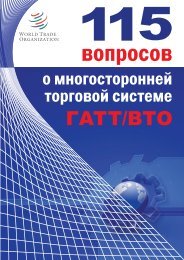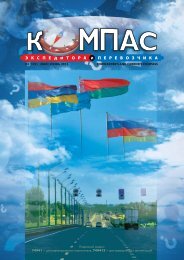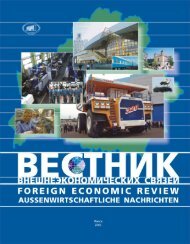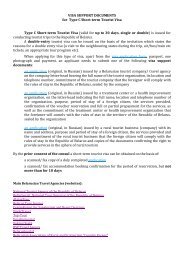Human Development Report 2013 - UNDP
Human Development Report 2013 - UNDP
Human Development Report 2013 - UNDP
You also want an ePaper? Increase the reach of your titles
YUMPU automatically turns print PDFs into web optimized ePapers that Google loves.
etter education of parents, especially of mothers,improves child survival. Moreover, workingwomen and more-educated women (who tendto complete their schooling before bearingchildren) are likely to have fewer children. 4Educated women also have healthier childrenwho are more likely to survive (table 4.1), thusreducing the incentive to have a larger family. 5Educated women also have better access to contraceptionand use it more effectively. 6Drawing on Demographic and HealthSurveys and micro-level surveys, research forthis <strong>Report</strong> reinforces these arguments, findingmother’s education to be more important tochild survival than household income or wealthis. This has profound policy implications, potentiallyshifting emphasis from efforts to boosthousehold income to measures to improve girls’education.This relationship can be illustrated by dataon child mortality (see table 4.1). ManyAfrican countries, most notably Mali andNiger, have a high under-five mortality rate.But in every country, the mortality rate islower among better educated mothers. Insome countries, such as Nigeria, much lowerchild mortality is associated with primaryeducation; in others, such as Liberia andUganda, the decisive difference is associatedwith secondary education.A modelling exercise conducted for this<strong>Report</strong> projects the impact of differences ineducation levels on child mortality over 2010–2050 under two scenarios. The “base case”scenario assumes that current trends in educationalattainment at the national level continuewithout substantial new funding commitmentsor policy initiatives. Under this assumption,the proportion of each group of children—categorized by age and gender—advancing tothe next education level remains constant (seeTechnical appendix).The “fast track” scenario assumes muchmore ambitious education policy targets,similar to those achieved in recent decadesby the Republic of Korea, for example, withthe proportion of schoolchildren advancingto the next education level steadily increasingA mother’s educationis more important toher child’s survivalthan is householdincome or wealthTABLE 4.1Under-five mortality rate and total fertility rate by mother’s education levelIn selected countries, most recent year available since 2005Under-five mortality rate(per 1,000 live births)Total fertility rate(births per woman)CountrySurvey yearNo educationPrimarySecondaryor higher Overall No education PrimarySecondaryor higherOverallBangladesh 2007 93 73 52 74 3.0 2.9 2.5 2.7Egypt 2008 44 38 26 33 3.4 3.2 3.0 3.0Ethiopia 2005 139 111 54 132 6.1 5.1 2.0 5.4Ghana 2008 103 88 67 85 6.0 4.9 3.0 4.0India 2005/2006 106 78 49 85 3.6 2.6 2.1 2.7Indonesia 2007 94 60 38 51 2.4 2.8 2.6 2.6Liberia 2009 164 162 131 158 7.1 6.2 3.9 5.9Mali 2006 223 176 102 215 7.0 6.3 3.8 6.6Niger 2006 222 209 92 218 7.2 7.0 4.8 7.0Nigeria 2008 210 159 107 171 7.3 6.5 4.2 5.7Rwanda 2007/2008 174 127 43 135 6.1 5.7 3.8 5.5Uganda 2006 164 145 91 144 7.7 7.2 4.4 6.7Zambia 2007 144 146 105 137 8.2 7.1 3.9 6.2Note: Data refer to the period 10 years before the survey year.Source: Lutz and KC <strong>2013</strong>.Chapter 4 Sustaining momentum | 89
















